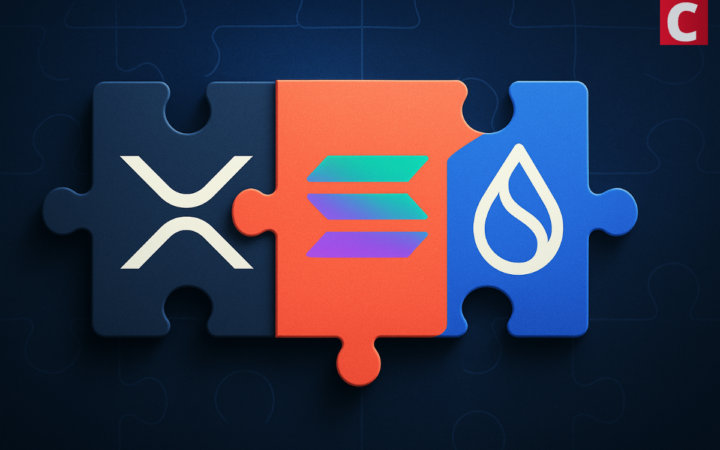
Sell one paperclip a year to each person in China and you have enough business to run an entire steel mill. China’s economic muscle power is mind-boggling and growing year by year. Five years ago, 41 percent of the world’s high-tech “unicorns” (private startup companies worth over $1 billion) were based in Silicon Valley and none in China.
Today only 16 percent are based there, while 35 percent are based in China. A similar trend is visible in areas as diverse as supercomputers, electric cars, life sciences, biotechnology, CNC machine tools and nanotechnology.
An important element in the Chinese success story is education, so it should come as no surprise that 26 percent of university graduates in STEM subjects — science, technology, engineering and mathematics — are Chinese.
By comparison, 9 percent are from the EU and 6 percent from the United States. (Source: UN Technology and Innovation Report, 2018.) Add to this, China’s determined focus on the “4th industrial revolution” and it’s no wonder the country is tipped to become a world leader in the three most exciting hypermodern technologies – Blockchain, Artificial Intelligence (AI) and Internet of Things (IoT).
In this article we examine how one ground-breaking Chinese company, in partnership with a Thai-based medical data enterprise, is helping to harness the power of these new technologies in the area of healthcare – an area in drastic need of reform.
The Healthcare Problem
We all know that prevention is better than cure. But sadly, that’s not how health systems work. Most people do not come into contact with their health system until they have already developed obvious symptoms of disease.
The reasons for this include: too few resources to waste on patients who aren’t sick; reluctance by patients to deal with healthcare while they feel healthy; inability of doctors to diagnose disease before it becomes visible, and so on.
All this leads to a time lag between the start of the disease and the start of the cure, with inevitable consequences for both patient health and treatment costs — consequences that make effective healthcare an expensive and elitist luxury.
Ideally, instead of this old-fashioned curative approach, we need a more proactive healthcare system, based on shared data, that treats individuals before they get ill, thus saving lives, freeing up our clogged hospitals and slashing our multi-trillion dollar health bills. Fortunately, due to advances in blockchain, AI and IoT, this sort of preventative approach is now within our grasp.
The NULS-Prism Solution
Two companies at the center of this effort are NULS – an award-winning Chinese blockchain company headquartered in Chongqing – and Prism Protocol – a medical data company based in Thailand. Together they have set up a blockchain partnership to create a Decentralized Data Exchange Network, connecting individuals, laboratory staff, diagnosticians, doctors, pharmaceutical groups, insurers and governments.
The idea is to collect medical data from individuals (using a discreet IoT device, like a wristwatch or bracelet) which (in return for a fee) can be used at the discretion of each individual to monitor their health, or provide data for medical research and the like.
By connecting with AI machines providing state-of-the-art diagnostic methodology, the system will be able to provide each individual with the earliest possible warning of disease, thus significantly improving the effect of treatment.
In addition, IoT devices will be able to improve patient adherence to prescribed therapies, minimize hospitalizations, and boost the quality of life for hundreds of millions of patients. Until recently, this kind of preventative healthcare system was a non-starter due to complex issues such as the cost of data collection, its quality and availability, and not least its ownership. (I mean, who owns your medical records?)
Today however – thanks to companies like NULS and Prism – we will soon be able to create the sort of secure, decentralized, easily-accessible blockchain network that overcomes all these obstacles and puts control firmly in the hands of the individual.
NULS Makes it Easy to Use Blockchain
NULS, winner of the Outstanding Project Award from China’s High-Tech Industrialization Association, was recently added to China’s prestigious Global Public Blockchain Technology Assessment Index (GPBTAI).
The company, whose current market value is in excess of $50 million, is noted for its customizable, modular-style blockchain infrastructure, which allows companies to develop their own sub-chains using NULS’ library of click-and-go modules, without the need to hire expensive blockchain developers. According to Liesa Huang, CEO of NULS: “Our platform makes it faster and cheaper for both small and large enterprises to get on the blockchain.”
The idea of simplified chain-creation has been a key feature of NULS since its foundation in 2017. The company promotes an open ecology in order to attract enough top-class developers to contribute more high-quality industry standard business modules.
The company’s technical architecture consists of microkernel and functional modules providing a multi-chain mechanism with parallel expansion and cross-chain consensus that allows companies to link their blockchain with other blockchains in the NULS infrastructure, encouraging joint partnerships like its collaboration with Prism.
According to Huang: “Our partnership with Prism is a perfect expression of our corporate philosophy to make it easy for companies to harness the power of blockchain. We believe that this ease of entry is the golden key to mass adoption.”
Prism
Prism’s medical data application is built on top of the NULS blockchain platform. It is an independent sub-chain of the NULS ecosystem which benefits from the functionalities of the NULS main-chain, while being adapted to serve Prism’s specific purpose.
By using the modules and infrastructure provided by NULS, Prism can develop and deploy its own sub-chain much faster than normal. The Prism development team works closely with the NULS team, while Prism’s lead developer is one of the core developers of the NULS infrastructure.
For Prism, the decision to collaborate with NULS was both rational and emotional. According to CEO Anthony Munoz Cifuentes: “having a strong partner in China is a definite strategic asset for us. Furthermore, thanks to the quality of its 3.0 generation blockchain technology, the NULS cross-chain ecosystem will be able to gather cutting-edge applications.
Being a part of this flourishing ecosystem is a key advantage for Prism.” But he also cited the human chemistry involved. “The relationship between ourselves and the NULS team also played a part in our decision. In addition to being the developers of one of the most brilliant blockchain platforms in the market, we found the NULS team very accessible, listening and humble.”
Blockchain and the Free-Flow of Data
When it comes to healthcare reform, the free-flow of data remains critical, says Cifuentes. “Our partnership with NULS gives us a blockchain infrastructure which allows data to flow in a seamless, secured, transparent and yet private manner.
It connects all the different parties to the healthcare ecosystem — from individuals to lab staff, doctors, medical companies, insurers and health authorities — permitting them to interact around the main asset of the digital-health revolution: medical data.”
As you can see, the key to the reform of healthcare is the collection and exploitation of data. According to Cifuentes: “Big Data will be for the 21st century what oil was for the 20th century. The latter was the era of machinery and automation powered by oil. The 21st century is the era of information and Big Data is going to be the fuel for all of our information producing machines. AI, for instance, is reliant on raw data (unintelligible to humans) which it processes to create information that humans can understand.”
All this is true. But remember that blockchain is the magic thread that connects everyone and allows this data to be exchanged and used. It is blockchain’s secure, decentralized and cost-effective network that will help to solve hitherto intractable problems of data privacy, security and ownership.
Looking Ahead
Prism’s first target markets are China and Southeast Asia, especially Thailand and Singapore. This dovetails nicely with China’s own priority, namely, to ensure that all of its major health indices match those of western developed countries by 2030.
By encouraging a proactive approach to healthcare, and fostering better health awareness leading to healthier habits, initiatives such as Prism will be important factors in the future health of the world’s most populous nation.
Taking a wider view, the global market for medical data is estimated to be worth $14 billion in 2017, and is projected to hit $69 billion by 2025, driven by greater adoption of cloud storage, large scale government initiatives, and growing demand for wearables.
In respect of the latter, McKinsey estimates that by 2025, some 1.3 billion fitness monitors will be in use worldwide. Investors in future healthcare or digital health opportunities need look no further.






